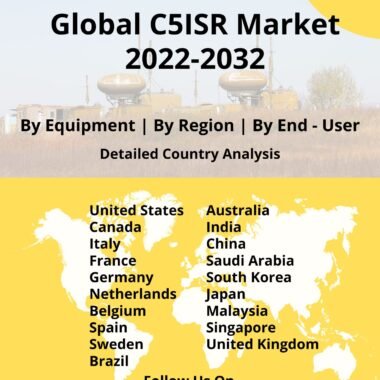Description
Satellite Batteries Market
Frequently Asked Questions of Global Satellite Batteries Market
The satellite batteries market refers to the industry involved in the manufacturing, distribution, and sale of batteries specifically designed for use in satellites and other space-based applications. These batteries are critical for providing power to satellites during various operational phases, including launch, in-orbit operations, eclipses, and contingency situations. The satellite batteries market encompasses a range of battery technologies and designs tailored to meet the unique requirements of space missions. NiCd batteries have long been used in satellites due to their robustness, reliability, and tolerance to a wide temperature range. However, their use has decreased over time due to their relatively lower energy density and environmental concerns related to cadmium.
NiH2 batteries are widely used in satellites, particularly for high-power applications. They offer higher energy density compared to NiCd batteries, longer cycle life, and better tolerance to high-temperature environments. Li-ion batteries are gaining popularity in the satellite industry due to their high energy density, lightweight nature, and longer cycle life compared to traditional nickel-based batteries. Li-ion batteries offer excellent performance and are particularly suitable for small satellites and CubeSats due to their compact size.
Advancements in battery technology have led to the development of batteries with higher energy density and longer cycle life, enabling satellites to operate for extended periods without the need for battery replacement or recharge. This is crucial for long-duration missions, deep space exploration, and continuous operation during eclipses when solar panels are not exposed to sunlight. Satellites operate in extreme temperature environments, ranging from extremely cold to high-temperature conditions. Battery designs and materials are continually improved to withstand these temperature extremes and maintain optimal performance throughout the satellite’s operational lifespan. Safety and reliability are paramount in satellite batteries, as failures can have serious consequences on mission success. Battery manufacturers focus on implementing safety features, such as thermal protection, overcharge and over-discharge protection, and robust cell designs to ensure the safe and reliable operation of batteries in space.
Major factors driving Satellite Batteries Market Growth
The satellite industry is experiencing significant growth, driven by increased demand for Earth observation, communication services, scientific missions, and space exploration. This growth translates into an expanding market for satellite batteries as more satellites are deployed and existing satellites require battery replacements or upgrades.
Trends Influencing the Satellite-Batteries Market Size
The satellite industry is increasingly focused on reducing the size and weight of satellites to enable cost-effective launches and accommodate more payloads. Battery manufacturers are working on miniaturizing battery designs and utilizing lightweight materials to meet the demand for compact and lightweight satellite power systems.
Satellite-Batteries Market Forecast & Dynamics
The satellite industry is increasingly addressing the challenges associated with the disposal of satellite batteries at the end of their operational life. Efforts are being made to develop environmentally friendly battery technologies and promote responsible disposal practices to minimize the impact on space debris and the environment. The satellite batteries market is a critical component of the satellite industry, ensuring reliable and continuous power supply for satellites in space. Advancements in battery technology, such as higher energy density, longer cycle life, and improved safety features, are expected to continue driving the market forward as the demand for satellite-based applications and services continues to grow.
The market forecast incorporates a thorough market size and market analysis. The market analysis includes regional market size, opportunities, drivers, and restraints. Country-wise market size is also included in the regional analysis.
Satellite Batteries Market Analysis for Recent Developments
Telstra, one of Asia’s largest telecoms, is eager to strengthen its ties with the satellite industry as it prepares to accept new satellite technology in the coming years. Telstra’s Commercial Engineering executive, Sri Amirthalingam, told Via Satellite that the company has been excited to see the new Low-Earth Orbit and Medium-Earth Orbit technologies and constellations come to fruition during the previous two to three years. Telstra announced an agreement with OneWeb earlier this year to investigate innovative options for greater digital connection across Australia and the Asia Pacific region. The collaboration complements Telstra’s T25 objective to expand and extend its network leadership position while also increasing mobile coverage across the country. As low-earth orbit (LEO) satellite network operators worldwide step up satellite launches, Taiwan-based suppliers of LEO components are waiting for a new wave of relevant orders. Sources in the supply chain have already noted an increase in inquiries, beginning in 2023.
In terms of volume, Taiwan-based suppliers mainly depend on the orders from Starlink, since satellite launches from other players remain small in proportion as they go through trials. According to Taiwan-based suppliers, however, the recent growth of order inquiries is not limited to LEO satellites: demands for geosynchronous and medium earth orbit (MEO) satellites are also rising. Inquiries on beamforming technology are on the rise as well, sources noted.
The global landscape of satellite batteries has witnessed significant advancements, shaping the capabilities and reliability of satellite systems in space. Satellite batteries are crucial for powering satellites during periods without sunlight (e.g., during Earth’s shadow) and providing backup energy for critical operations. Advancements in battery technology include the development of lightweight, high-capacity, and long-life batteries. Lithium-ion (Li-ion) and other advanced chemistries have become increasingly prevalent, offering improved energy density and efficiency, crucial for extending the operational lifespan of satellites.
In response to the growing demand for small satellites and CubeSats, which have unique power requirements, there has been an emphasis on miniaturized and customizable battery solutions. These innovations support the diverse needs of satellite missions, from Earth observation to scientific research and communication. Efforts to enhance battery resilience against harsh space environments, such as radiation and temperature extremes, contribute to the overall reliability and longevity of satellite systems. The development of smart battery management systems also optimizes energy usage and extends the overall mission life of satellites. The ongoing evolution of satellite batteries in 2023 signifies a commitment to advancing the capabilities of satellite systems, improving energy efficiency, and supporting the continued growth and diversity of satellite missions.





